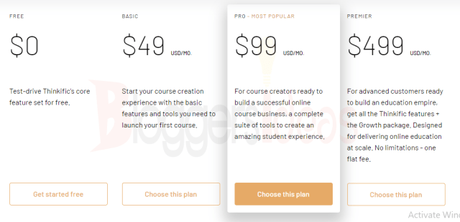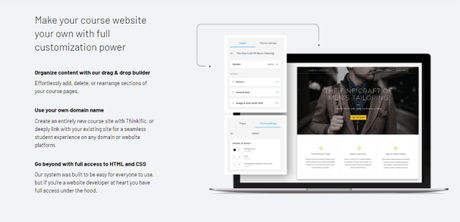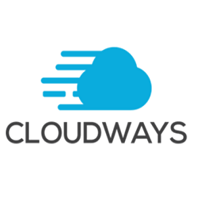If you want to immerse yourself in the world of digital learning and course creation, there are some very sophisticated platforms in the marketplace which help you in creating amazing courses to grow your business.
In the online learning world, the requirements of each individual vary. While some of them require freedom and design flexibility, some other looks for low prices with large amounts of information.

Although there are many platforms with their own functions, it is widely possible to distinguish between hosting platforms and educational platforms.
Some platforms, such as Thinkific, allow users to create their own lessons and attend courses through their platform. This platform is great for individuals who want to educate and to connect with their students.
While online platforms such as UDEMY is known for their high marketing skills and student base as well as the basic marketing. A quick look at one of the websites would be enough to highlight why both are the right choice for you. However, a sound and detailed understanding of both the platforms would help you to make better decisions.
This detailed guide will help you to compare the various features of Thinkific and Udemy, making it easier to find your perfect choice.
Here we will discuss about Thinkific Vs Udemy 2019 : Which is best for your online course platform?
Self-hosted course platforms
The self-hosted platform has several features that allow the user to control most of his course. This feature works very well with most users, as this is not usually the case for markets or educational platforms.
Although control is important for personalizing your website, it is also important for collecting your students' data.
If the platform is a marketplace or a teaching platform like Udemy and Thinkific, this control does not exist on the student list.
Control of the course surface when it is submitted to the client is also absent.
Udemy Features in Detail
Teaching Platforms like UdemyIf the aspect of control is an important feature of personal hosting platforms, this offers advantages over similar market platforms such as Udemy's market exposure.
Thanks to its large database and reach, a platform like Udemy can ensure the deviant traffic on your site. This inevitably leads to more sales and business.

However, this exhibition has a price tag: it has no control over the student list or user interface when it comes to advertising messages and similar features.
With various proposed plans, the platform also carries out reorientation exercises to seek potential investors for reinvestment.
However, read the sales and earnings details to understand what Udemy is going to cut out of your total income. This is important to understand the strategy in which each of these sites works.
Having understood the basic idea of the different types of platforms available online, we can now enjoy a basic comparison of the two websites and their features.
When it comes to design, Thinkific offers a variety of customization options. All sensations and the look of your course are customizable. With custom CSS and HTML graphics, your course design is fluid and open to creative contributions. The different sides of the course can also be designed differently.
This is not the case with Udemy. In terms of course design, there is virtually no customization other than the selectable course graph. Apart from that, you can not make any further changes to the style or design of your course.
If you want to create a small brand or a large number of name-tagged courses, the definition of a custom domain name that can be used by various types of marketing, such as Adwords and SEO.
With Thinkify Marketing, users can create custom domains after they've migrated to one of their paid plans. These plans are affordable if your course creates a stable income.
While Udemy offers a very attractive exposure path and a high degree of far-reach marketing, the control panel does not offer such options.
While it's obviously possible to purchase a separate domain name, it's not offered as an option on the Udemy platform, and your Udemy courses cannot be hosted on your own domain.
One of the biggest issues that distinguish Thinkific from Udemy is that you are technically not allowed to fully own your course. In Udemy you can specify your name in the course and add and update lessons, but you can not delete the course from Udemy.
However, this does not mean that you can not move it to another platform, such as Thinific. With Thinkific, you can do what you want with your class because you have it.
One of the aspects that established markets can have is credibility. Platforms like Udemy have been around for a long time and have been reviewed by students who have proven useful in several courses.
In this way, you can use a large part of the confidence factor for potential buyers who have already used or have already used these platforms.
It would be something that Udemy thinks about. The reputation generated by Udemy would take much less time than a similar scope and reputation in Thinkific.
Creating a reputation on self-hosted platforms is highly dependent on reviews and testimonials. Unfortunately, many people today know that these credentials and comments can easily be falsified, a trend that is also noticeable on many online product pages. For this reason, it becomes increasingly difficult to build a reputation based solely on these factors.
You need to know your brand goal before choosing between your own hosting platforms or an e-learning course creation platform. This decision can help you identify an approach based on a cost-benefit analysis based on your existing budget.
If you only create these courses for earning money, it may be better to choose the option that is more affordable to manage and has a higher income per sales path.
If this is not the case, you can use a mixed approach to achieve the long-term vision of your brand. A solid source of income can become established in the market within a few months. These can then be transferred via smart marketing and a traffic channel to a self-hosting platform.
If you are considering creating your own brand, it may not be the best idea to resell your course on a platform like Udemy, as this is not dedicated to promoting your brand.
The only reason they host you is that of the promotion of your brand and the commissions they provide in your lessons. If you attract a large number of students, you can also encourage them to continue working with them!
Another important factor that distinguishes market platforms from personal hosting platforms is marketing. The only way the public-become with their can familiar courses.
Udemy offers different forms of marketing, depending on the size of your plan. Thinkific has no extensive marketing activities for you. You have to do everything yourself. However, the fact that Udemy does the work for you does not mean that you will not take your share of the entire exercise.
In some cases, there are plans where the hosting platform generates 50% of its page revenue through external partners. Despite the high market price for the same price, you could do much less per price.
Therefore, you must ensure that you balance the profits and expenses of these education platforms before traveling on a journey that you did not expect!
You're the boss on a platform like Thinkific. You can put all kinds of tags on your page, but the responsibility for distribution lies with you. You can create your own partners and distribution channels. For a new owner, however, it can be exhausting and confusing. So do not expect incredible results to test your marketing from the ground up.
Pricing and Expenditure: Thinkific vs Udemy
Both platforms like Thinkific and Udemy have a free registration program that gives everyone the opportunity to teach their courses. But those are not the only costs you have to bear. Although Thinkific offers monthly payment plans with more features than the free version, transaction fees are linked to Udemy.
Udemy Testimonials :



The platform costs 3% of the sale of the course if you advertise the course, 50% if Udemy sells the course, and 75% of the users' purchases are paid for by third-party sales and affiliates.
Thinkific also includes transaction fees: 10% for free packages, 5% for essential packages starting at $ 49 per month, and no fees for plans starting at $ 99 per month. If you sign up for an annual plan with Thinkific, you will receive a 20% discount on all plans.
Udemy offers 5 price levels for your classes: You must choose between:
one point, classes could have a price All the costs you want, but this guideline seems to have been overridden. In Thinkific, there are no levels to follow. The strategy that you consider best can be applied here. The course costs between 10 and 997 USD. Just market it and make sure the target group is ready to spend that money.
One of the key factors to consider when selecting the platform is understanding whether you have control over your customers. If you use a hosting platform, accessing student lists is one of the big advantages.
Thinkific has this advantage over Udemy. At Udemy you do not own any property of students who have attended your course.
You are not allowed to add them to your mailing list or sell your services outside the platform. This leads to a marketing approach without vision and without control. This expresses another feature of market building platforms that choose their own promotion rather than any other person on the platform.

After examining these differentiation criteria, it becomes clear that both platform types are intended for people for different purposes. From there, a market could help attract sales. You also have a good idea of the demand that exists for each course you want to teach.
If you want to create a brand, it's better to organize and market the course instead of sharing the revenue with another brand.
If you're looking for control, hosting platforms are the way to go. Therefore, make a strategic decision and pursue a single or mixed approach based on your short- and long-term goals.
One negative point with Thinkific is that they do not offer a market like Udemy. So if you're just starting out, you'll find valuable help if you do not have an email list or a large social network.
On the other hand, while the market is full of people willing to buy courses, you still have to do everything to market and sell your course here.
For example, If you are creating your own online course on a WordPress blog, you will need to generate a lot of revenue and time to make it work. The reason is that it is very competitive and you need a lot of corrections and SEO to improve your ranking.
Opinions are the soul of the market. The higher the quality of 5-star ratings, the more likely you are to get a higher position in the market.
On the other hand, with Thinkific you can create your own market that only sells your courses. You will probably have a few students at the beginning, but if the students enroll in your classes, you can sell them in the other courses you have attended.
One thing that I like about Thinkific over other platforms is that It gives you instant access to selling your courses. This means that you will not receive the payment if someone buys your course properly. You need to simply insert your PayPal account or Stripe account.
At Udemy you have to wait about 3 months to get paid. The reason is that every Udemy course has a 30-day return policy.
Technically, you can also offer the same warranty at Thinkific. However, if someone asks you to return the money, you may have to repay the money you paid.
Thinkific offers you the option to set multiple payment options. Udemy only allows you to offer your course for free or to offer a unique payment option.
However, Thinkific offers 5 payment options.
- free - Technically, it's not a payment, but it does not stop being a
- single payment option. - Fees and your customers will fix your acceptance forever
- - a payment. This allows you to set up a monthly payment plan a fixed number of months
- recurring payment- Finally, you can offer a recurring payment plan that pays you until your cancellation.
Together, you can offer everything from a free course to a recurring membership plan. The possibilities here are endless.
Both Thinkific and Udemy charge a transaction fee. This is collected every time when a course is sold. However, transaction fees from Udemy are much more expensive than those from Thinkific. The Thinkific transaction fees are as follows.
- 10% if you are in the plan,
- 5% if you are in the Essentials plan,
- 0% if you are in the trading plan and more.
Now you see Udemy and see how much they charge in transaction fees.
- 3% if you promote and sell the course on your blog or
- 50% email list if Udemy advertises your course through its network.
- 75% if affiliate and acquisition sales were paid, this would include publishing ads on Facebook.
If you advertise the course in your own email list, this is a good deal, but if you are looking for Udemy to support most of the weight and sell for you, remember to give up somewhere. At 75% of every sale you earn.
This is where a platform like Thinkific makes more sense, that's the course Udemy enjoys.
The worst aspect of starting a business with Udemy courses is that you do it on rented land. If you are not familiar with this analogy, keep this in mind. If your courses are all technically based on Udemy, you can change the rules anytime, anywhere.
They can determine the price of their course, how much they earn for each sale, or even complete the entire process and take all the students with them.
With Thinkific you can change things on your platform. However, if you do not like the platform, you can change and track all the courses, students, and clients you are accompanying.
Quick Links:
Conclusion: Where Should You Teach Online Classes? Udemy Or Thinkific
For me, Thinkific is clearly the winner here.Although Udemy offers a large market, you do not have much control, and I think their prices are very high. In addition, Udemy can change the way they operate at any given time, and building your business on rented land is a bad idea. It would not be the first time this happened.
Thinkific, on the other hand, looks very attractive and offers many possibilities. Among the variety of payment options, design options and total control of your students Thinkific is the right thing. Of course, they do not have a market like Udemy, but with Thinkific you can create your own market.
Let me know in the comments section below what's your opinion towards both platforms. Did you like our comparison between Udemy Vs Thinkifc ? Have you tried Udemy or Thinkific whats your experience share in comments below !


